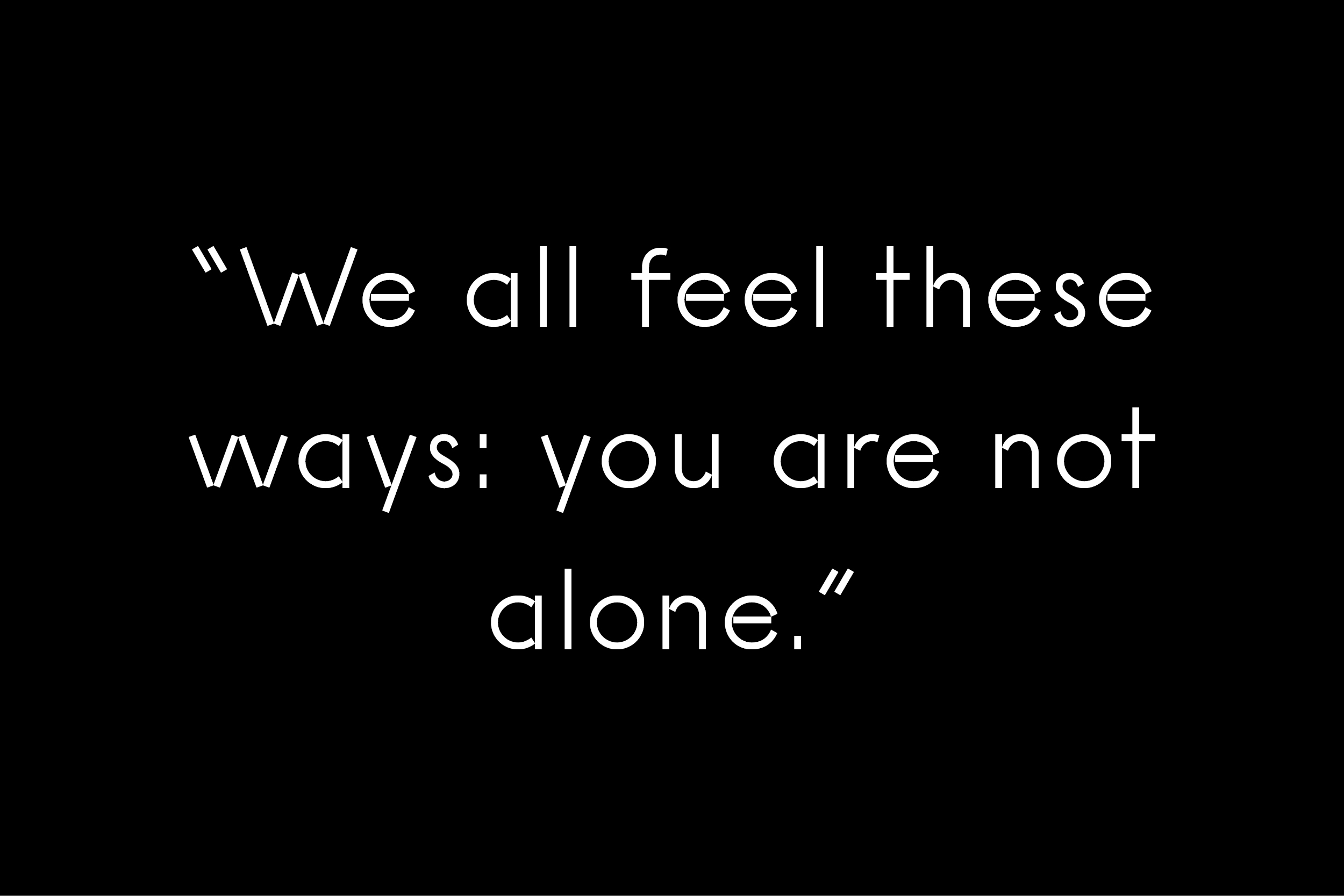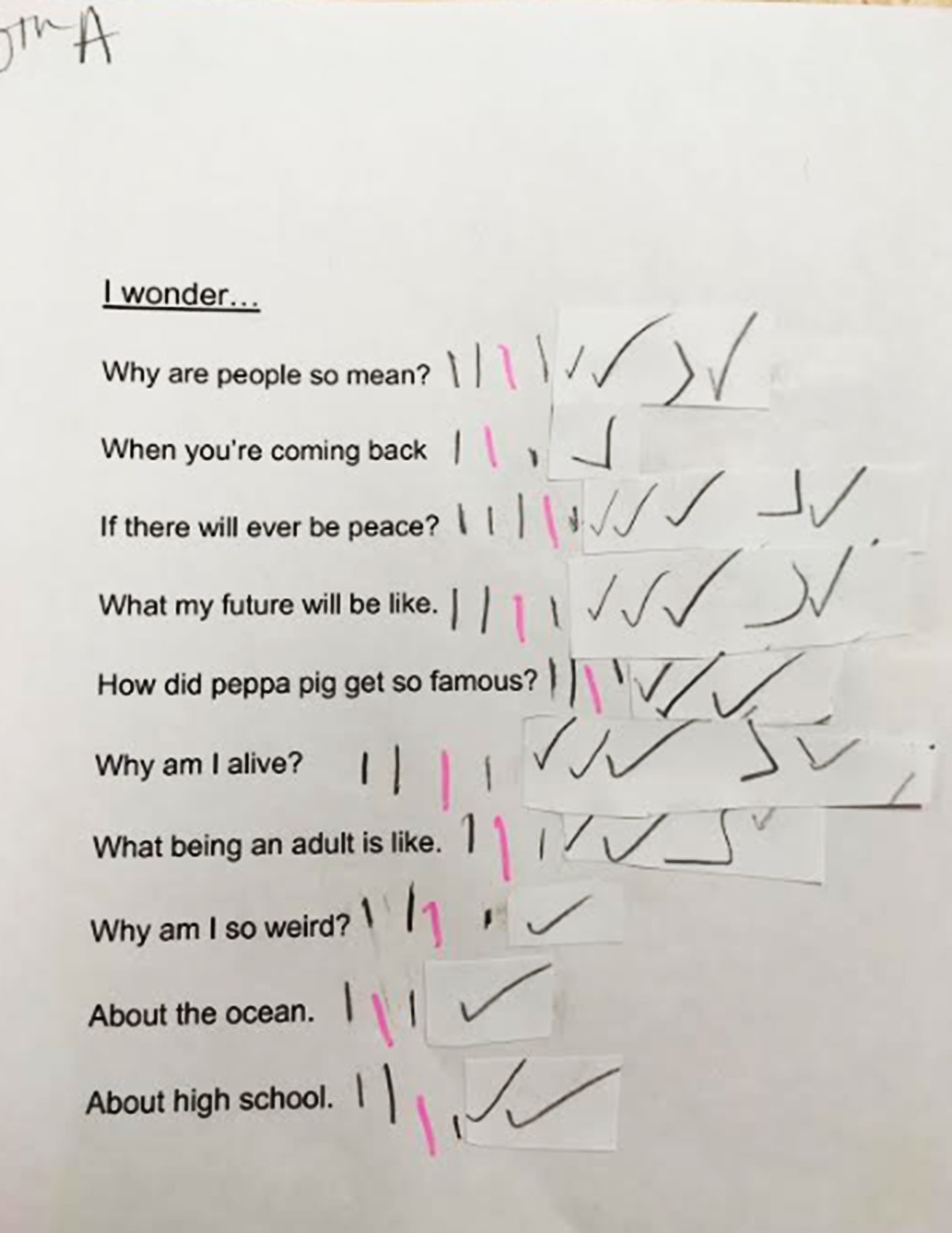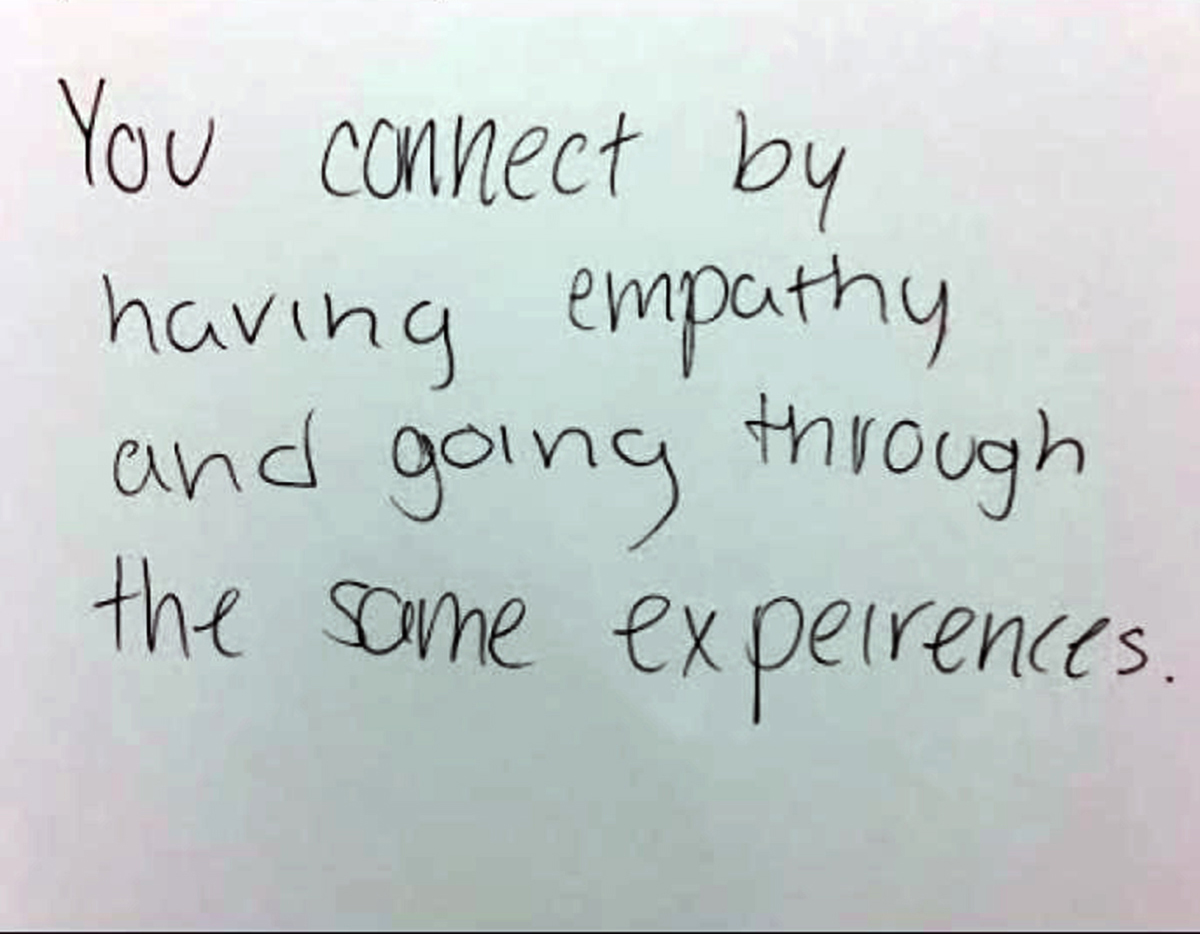
Dear Future Educators,
Throughout this educational journey, I have expected to feel “done” in some way, at some point. I thought I would feel some sense of closure or finality, but I see now that nothing we do within education really ends . . . after all, that is the point of it, isn’t it?
I began this project just under a year ago when I was applying to the MCA’s Teacher Institute. In my application, I spoke of my core beliefs as an educator, which served as the driving force for this project. I believe in the importance of individual and collective well-being, and that a sense of connection with others seems to be an important part of well-being. As the program began and progressed, I combined these interests with the general observation of how humans interact over art. The goal of my project was/is to explore the many ways in which art can help us to connect with one another. Using the MCA’s exhibition Jonathas de Andrade: One to One, with the piece Jogos Dirigidos (Directed Games) (2019) as an initial focus, I set out to explore connection through art with my 60 sixth-grade students at Acero Brighton Park Elementary School.
Process
As with most cases, my plan did not play out exactly as I had imagined, which is something I have embraced throughout this process. My students were much more interested in Assaf Evron’s Chicago Works installation, as the de Andrade exhibit closed before our visit. We brainstormed a collective list of issues that affect us individually, as a class/school, and as a part of the world, and students found a lot of their concerns to be either tied to the idea of environment, climate change, and/or generally what we surround ourselves with (which is a literal interpretation since the exhibit creates its own installation-like environment that envelopes the audience). Realizing that we were all in a shared space with shared problems helped our group to take the next step in the project, which became powerful in and of itself.
Returning from the museum, I was careful to facilitate and guide, rather than to shape or control, my students’ project. After a lot of trust-building activities (circle-keeping, think-pair-share, reflection, group work), students each wrote their own, unique “I Am Poem,” honestly addressing issues within their lives. I asked them to complete these anonymously, and then collected repeated themes and made them into a separate sheet. Students were invited to “tally” each statement they agreed with, and it became apparent just how much we all have in common. After a few classes of experimentation, students were mainly drawn to the act of weaving, and we created our own webbed installation with the statements. Every time a student agreed with a statement, he or she wrapped a piece of yarn around that statement (we also created one with teachers and post-it notes, too). To see this installation hanging around the school (and to see many, many others stopping to read) was a beautiful reminder to others that we all feel these ways: you are not alone.
Conclusion
Throughout this process, I have been reminded (many times over) that my students are not just “kids.” I think it is easy to feel that you hold “all the power” as a teacher and/or authority figure, but it is so important to let that go, or else you will never learn what others have to teach you. I was incredibly surprised by the natural leadership and buy-in of my students during this process. I honestly think that just allowing them to have a voice in what can be otherwise an incredibly structured, strict environment was the key element in this project’s success.
These students attend school for eight to nine hours a day, without any recess or study hall break, with a twenty-minute lunchtime, and “no-talking” is strictly enforced both inside classrooms and in the hallways. These students attend a school where most of their teachers don’t look like them, have no idea what their home life is like, and cannot speak their first language. These students attend a school that requires them to be at a “Level 0” for the majority of the day, to subscribe to the formula of success in only the approved ways, and encourages them to blend in instead of sticking out. After years of this, it is really only natural that when you give students some freedom, they will want to take ownership.
This project honestly provided the most truthful glimpses of my students, as actual individuals, that I have seen in the past few years of teaching, and I’ve worked with this same group of kids every single year.
Realizing that now, I feel that I must do better to provide all students with these opportunities to connect with themselves and with others, to further their opinions and beliefs, and to realize that not everyone is the same (and that’s more than okay!), but also that we do share similar hopes, dreams, and fears. Circling back to the beginning of this reflection, I realize that trying to answer the final question of “where do we go from here?” is quite futile. Anytime I have tried to plan throughout this process, it has changed immensely. That is not to say that planning is bad—I need to plan so I have a jumping-off point.
But after this experience, I have realized that the most meaningful opportunities for my students cannot be created by me; they can be facilitated by me, but not owned. Because even though I speak with them, read endless studies and reports about them, and spend literal years with them, I am not in their shoes. And I could never expect to know exactly what they need, what they want, or what they feel. Only they can do that. So going forward, I would like to keep this renewed passion and inspiration, not only while I am teaching, but honestly in all aspects of my life. I know we’ve all heard it before: there is no way to know what someone else is going through, or what is best for them. But sometimes giving someone an opportunity to use their voice and to connect with others to realize that they are not, in fact, alone in their feelings, or that they aren’t just falling behind in the crowd, is the least we can do.
—Christine



I AM POEMS + WEBBED INSTALLATION
Invite students to write anonymous poems finishing the sentence “I am . . .” Collect responses and make some lists with the common themes. Students can mark tallys on statements they also agree with. Then, make an installation by hanging individual statements in a spacious cluster. Students can use yarn to wrap and connect different statements they agree with. It is a beautiful reminder to others that we all feel these ways. You are not alone.
Christine Pace
Acero Brighton Park
Christine Pace is currently an Art Educator working at Acero Brighton Park with students in grades K-8. Christine began teaching at Brighton Park in 2017 and has since found a home connecting with students of all backgrounds and walks of life. She bases her curriculum on social-justice education and cultural exploration, believing that arts education is integral for every being. Christine grew up in Cleveland, Ohio, and, after completing her Master's of the Arts in 2016, moved to Chicago where she now happily resides.